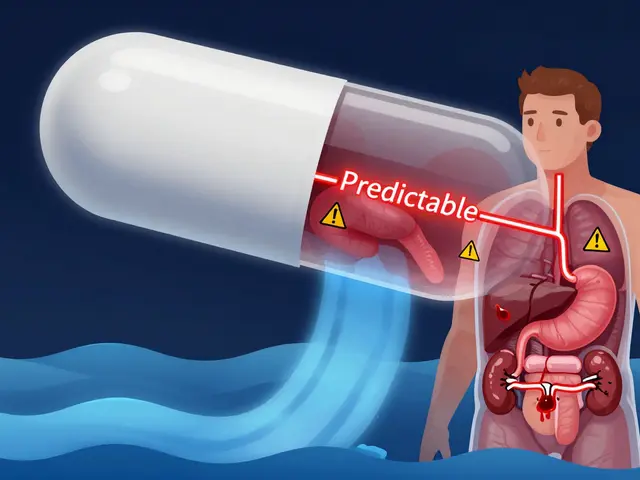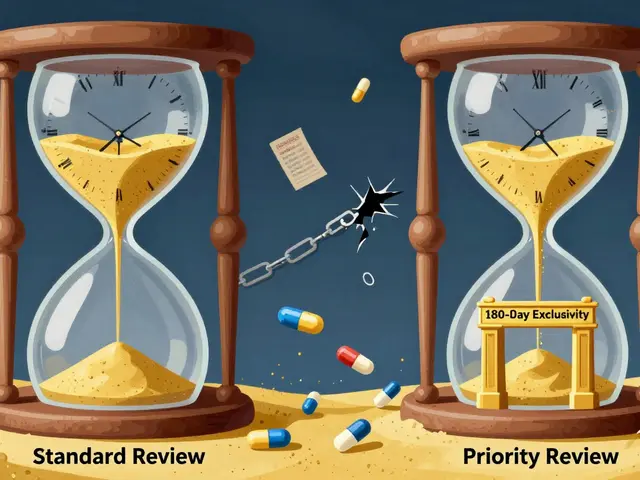Lasix Alternatives (Oct 2024): Which Diuretic Might Work Better for You?
Having trouble with Lasix (furosemide)? You're not alone. In October 2024 we reviewed real options people and clinicians choose when Lasix isn't the best fit. This summary pulls the practical takeaways: how each alternative works, when doctors pick it, and what to watch for.
Quick comparison of the main options
Torsemide — Works like Lasix but lasts longer and may give steadier fluid control. Many clinicians switch to torsemide when furosemide feels short-acting or when dose frequency becomes a problem. Expect similar side effects (low potassium, low blood pressure), but dosing can be easier for some patients.
Bumetanide — Strong and fast. It’s often used when patients need a potent loop diuretic but have absorption issues or require a different response. Doses are smaller by milligram compared to furosemide, so beware of conversion mistakes. Monitor electrolytes closely, especially potassium and magnesium.
Chlorthalidone — A thiazide-like diuretic that stays in the body longer than hydrochlorothiazide (HCTZ). It can be very effective for long-term blood pressure control and mild fluid retention. Compared to HCTZ, chlorthalidone often lowers blood pressure more but can drop potassium and raise uric acid and glucose.
Spironolactone — A potassium-sparing option that blocks aldosterone. It’s useful when fluid retention is driven by heart failure or cirrhosis and when low potassium is a concern. It can cause high potassium and hormonal side effects (breast tenderness, irregular periods). Use with care if kidney function is reduced.
Hydrochlorothiazide (HCTZ) — A common option for mild edema and blood pressure. It’s easier on the kidneys than loops in some cases but less powerful for large fluid overload. Good for daytime dosing and when long-term BP control is the goal.
How to pick one and how to monitor
Which one is right depends on the problem: for rapid, heavy fluid loss (pulmonary edema, severe swelling) loops like bumetanide or torsemide are preferred. For chronic blood pressure and mild swelling, chlorthalidone or HCTZ often works better. Spironolactone is the go-to when you need potassium-sparing effects or are treating heart failure with reduced ejection fraction.
Monitoring is simple but crucial: check blood pressure, weight, kidney function (creatinine), and electrolytes (potassium, sodium, magnesium) after starting or changing doses. Watch for dizziness, muscle cramps, or sudden swelling changes—these are signs to call your clinician.
We covered realistic pros and cons in the October article: switching diuretics can improve daily life, reduce dosing hassle, or control side effects—but every switch should be guided by a clinician. If you're thinking about a change, bring your recent labs and a list of symptoms to your next appointment.
7 Effective Natural and Pharmaceutical Alternatives to Viagra
Exploring options beyond Viagra can be beneficial for those seeking different erectile dysfunction treatments. This article covers a spectrum of choices from natural supplements like Red Ginseng to pharmaceutical options such as Cialis, each with unique advantages and considerations. Whether opting for long-lasting medication or more immediate solutions, understanding the pros and cons of each alternative can help make informed decisions. Dive into these options to discover what might fit your needs.
Top Lasix Alternatives for 2024: Managing Fluid Retention
As we step into 2024, finding effective alternatives to Lasix becomes crucial for those managing edema and hypertension. With various options available, Torsemide, Bumetanide, Chlorthalidone, Spironolactone, and Hydrochlorothiazide emerge as potential substitutes. Each offers unique mechanisms and benefits in treating fluid retention, presenting distinct pros and cons. This detailed article evaluates each alternative, helping readers understand which option may best suit their medical needs.







